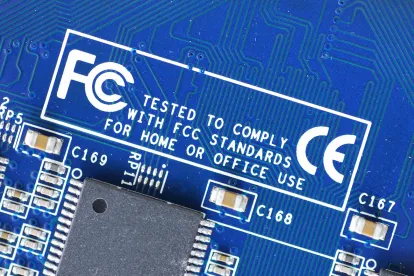Earlier this month, the FCC adopted a Report & Order (“R&O”) streamlining the application review process for transactions involving foreign investment or participation in U.S. telecommunications companies (commonly known as “Team Telecom” but also referred to as “the Committee” in the R&O). Team Telecom is comprised of a committee of Executive Branch agencies (including the Department of Defense, the Department of Homeland Security, and the Department of Justice) tasked with assessing the national security, law enforcement, foreign policy, and trade policy concerns in these cross-border M&A transactions involving U.S. telecom companies. The FCC issued the R&O to formalize a decades-long practice and update its rules governing Team Telecom review consistent with the President’s April 4, 2020 Executive Order No. 13913 (the “EO”). The FCC builds upon the initial procedural requirements set by the EO to add certainty and transparency to the Team Telecom review process in a manner that protects national security interests without discouraging foreign investment.
The Cheat Sheet: The Four Key Takeaways of the FCC’s Team Telecom R&O
-
Timelines and Structure. For the first time, Team Telecom reviews must unfold consistent with FCC-mandated timeframes (e., a 120-day initial review period followed by a discretionary 90-day secondary review) and clearer procedural guardrails. This increased transparency should benefit most transaction parties and facilitate greater clarity and acquisition planning earlier in the deal cycle.
-
“Standard” and “Non-Standard” Mitigation. The R&O references two different types of mitigation: “standard mitigation” that can be recommended in the aforementioned timeframes, but also “non-standard” mitigation that requires additional time and procedural hurdles for Team Telecom to recommend. We think this could result in increased reliance by Team Telecom on mitigation measures that should be familiar to many “frequent flyer” investors in the telecom space (e.g., the requirement of a U.S. point of contact, siting certain network infrastructure in the U.S., and periodic security auditing), thus providing more predictability and certainty for transactions that do not present a unique risk profile.
-
Continued Focus on Previous Deals. FCC regulated entities should be aware that, consistent with the EO, the R&O allows Team Telecom to review—and potentially, recommend revocation of—existing FCC authorizations. We saw a preview of this authority earlier this year when Team Telecom asked the FCC to consider revoking previously-granted international 214 authorizations held by some Chinese carriers. We expect a continued focus on existing authorizations, especially regarding potential noncompliance with mitigation agreements.
-
Relationship with CFIUS. Given both the recent and significant changes to the Committee on Foreign Investment in the United States (“CFIUS”) review process enacted in connection with the 2018 Foreign Investment Risk Review Modernization Act and the FCC’s implementation of the EO, some transaction parties may approach future foreign investment reviews with significant trepidation. However, we do not expect transaction parties with deals triggering both CFIUS and Team Telecom review to face significant new regulatory obstacles. To the contrary, the establishment of formal review timelines and additional input into the Team Telecom process from the U.S. Intelligence Community will likely improve alignment between the frequently parallel review processes.
I. Background – The First Rule is “There is No Rule”
The FCC has informally referred applications raising foreign ownership concerns to the Executive Branch for over 20 years.
Team Telecom currently operates without legislative authority or regulatory jurisdiction and its reviews are not subject to time-limited review periods (unlike reviews conducted by CFIUS). Indeed, in some cases it has taken Team Telecom several years to conclude its review and make a recommendation to the FCC. In May 2019, for example, the Committee denied China Mobile USA’s international section 214 application following an eight-year review period which involved extensive discussions, information collection, and consultation with the intelligence community – marking the first instance in which Team Telecom denied a section 214 application based on national security concerns.
Generally, the Team Telecom review process begins when the FCC refers applications for certain licenses and authorizations where applicants have 10% or more direct or indirect foreign ownership. Upon referral, Team Telecom initiates a review of the proposed transaction concluding in one of three ways: (1) Team Telecom makes no comment and the FCC acts on the application; (2) Team Telecom recommends the FCC deny the application or revoke a preexisting license or application; or (3) grant of the application is conditioned upon the applicant’s compliance with a mitigation agreement, negotiated between the applicant and Team Telecom and intended to ameliorate any national security concerns – typically via a “Letter of Assurance” or “National Security Agreement.”
The FCC had previously sought public comment on proposals to improve the review process in 2016, although the rulemaking proceeding was largely dormant. However, with the issuance of the EO, the FCC restarted the proceeding, ultimately leading to the adoption of the R&O.
II. Overview of New Team Telecom Regime
At its core, the R&O is intended to make the review process more efficient and provide predictability and transparency for the industry, the Commission, and Team Telecom. At a high level, the R&O addresses changes to three fundamental parts of traditional Team Telecom Review: (1) the threshold requirements for review; (2) the traditional “Triage Questions” applicants are required to answer; and (3) the timeline for review.
III. Threshold Review Requirements (and Exclusions)
The R&O establishes which applications will be subject to Team Telecom review and carves out certain exclusions. As before, the following applications with at least 10% foreign ownership will automatically trigger Team Telecom review: (1) international section 214 authorizations; (2) submarine cable landing licenses; (3) transfers or modifications of such licenses and authorizations; and (4) section 310(b) foreign ownership ruling petitions involving broadcast stations or common carrier wireless or satellite earth stations.
Critically, the FCC also determined that certain types of applications no longer necessitate automatic referral, including:
-
Pro forma ownership change notifications and applications;
-
International section 214 applications involving an applicant who is party to an existing mitigation agreement (and there are no new 10% or greater foreign owners);
-
International section 214 applications where the applicant was cleared by Team Telecom within the past 18 months without a mitigation agreement (and there are no new 10% or greater foreign owners);
-
Applications where the only reportable foreign ownership is through wholly owned intermediate holding companies and the ultimate ownership and control is held by U.S. citizens;
-
Applications seeking only domestic section 214 authorizations, and non-common carrier satellite earth station applications.
ver, the Commission retains discretion to refer or exclude certain applications independent of these rules.
Stakeholders should note that the new rules do not affect or alter Team Telecom’s authority to investigate existing authorization holders or licensees. Indeed, Team Telecom recently initiated several national security reviews of existing 214 holders without a pending application before the FCC. Building on concerns expressed in the 2019 China Mobile USA denial, in these new proceedings Team Telecom will consider potential national security risks posed by four Chinese telecommunications companies with ties to the Chinese government. In addition, the FCC declined to exempt applicants undergoing a contemporaneous CFIUS review, noting that those reviews often occur simultaneously.
IV. Newly Standardized “Triage Questions”
Traditionally, applicants with reportable foreign ownership in reviewable applications must answer a set of standardized questions generally related to their ownership structure and network architecture – the often-dreaded “Triage Questions.” These questions typically involve burdensome, detailed requests (i.e., the passport numbers of key owners and executives) and we frequently prepare our clients to begin gathering this information during the application process.
In the R&O, the FCC has streamlined the Triage Questions (now called the “Standard Questions”) into five enumerated categories:
-
Corporate structure and shareholder information;
-
Relationships with foreign entities;
-
Financial condition and circumstances;
-
Compliance with applicable laws and regulations; and
-
Business and operational information.
The FCC directs the International Bureau to develop Standard Questions within these categories, subject to public comment, within 90 days (or by December 30, 2020), and to maintain and update the questions as necessary. Applicants must directly file their responses to the Standard Questions with Team Telecom prior to or concurrently with their FCC applications to facilitate more expeditious review. Where further explanation or information is warranted, Team Telecom may submit to applicants additional “Tailored Questions” that seek information beyond the scope of the Standard Questions or categories.
All international section 214 and submarine cable applicants and non-broadcast section 310(b) petitioners – regardless of foreign ownership – must also generally certify that they will:
-
Comply with CALEA and other Commission rules;
-
Make communications to, from, or within the United States, including records thereof, available to U.S. law enforcement officials;
-
Designate a U.S. citizen or permanent U.S. resident as a point of contact for requests and as an agent for legal service of process;
-
Affirm that all information submitted to the Commission and the Committee is complete and accurate, and provide notice of substantial and significant changes in such information; and
-
Affirm the understanding that their failure to fulfill any conditions of the grant of their applications can result in license revocation or termination and criminal and civil penalties.[1]
The Commission found these certifications would not only streamline and significantly expedite the review process in the public interest, but would help it maintain up-to-date and accurate information for all its licensees and authorization holders at little “cost” to applicants.
Applicants must also include in their applications an ownership diagram showing qualifying foreign ownership in the applicant entity. In addition to these requirements, applicants for domestic section 214 transactions, international section 214 authorizations, and submarine cable licenses now must disclose, in addition to equity interests, the voting interests of foreign individuals or entities with 10% or greater direct or indirect ownership.
V. New Review Timelines and More Transparent Processes
The biggest pain point for practitioners and companies appearing before Team Telecom has long been the lack of formal time limits imposed on review periods. In our experience, Team Telecom review periods lasting 6-9 months are common, while there have been at least a few cases spanning years. For example, FCC Commissioner Mike O’Rielly has bemoaned Team Telecom’s lack of formal structure, referring to its review process as “indefensibly unpredictable.”
At long last, the EO adopted formal timeframes for Team Telecom review and the R&O similarly establishes a 120-day initial review period for referred applications. There is also a discretionary 90-day secondary assessment period and an additional seven days to notify the Commission of the Committee’s decision[2] – meaning the review process may take anywhere from 127 to 238 days, as compared to the previous three years’ average of 260 days. [theme of my comments: shorter sentences are better. This paragraph was one long sentence.]
Team Telecom’s 120-day review period is initiated when Team Telecom determines the applicant’s responses to the Standard Questions are complete, and Team Telecom must file status updates with the FCC throughout the process. While the FCC may extend either review period upon application, it expects “most” Executive Branch reviews to be completed within the initial 127 days. In those “rare” instances where Team Telecom cannot reach a consensus within the secondary review period or an extension, the review escalates to the President. And where Team Telecom has neither provided its final recommendation nor initiated the secondary assessment period, the Commission is free to act upon the application in its own discretion.
Chairman Ajit Pai characterized the R&O as a “critical milestone” in improving what he previously considered a “broken” foreign ownership review process, and FCC Commissioners from both parties expressed support for increased security measures.
The R&O will become effective following review by the Office of Management and Budget and publication in the Federal Register.
FOOTNOTES
[1] Broadcast petitioners seeking a section 310(b) ruling are required to certify only to the latter three certifications.
[2] In instances where non-standard mitigation or denial is recommended, Committee Advisors are given 21 additional days after the secondary assessment period to consider the recommendation.





 />i
/>i

